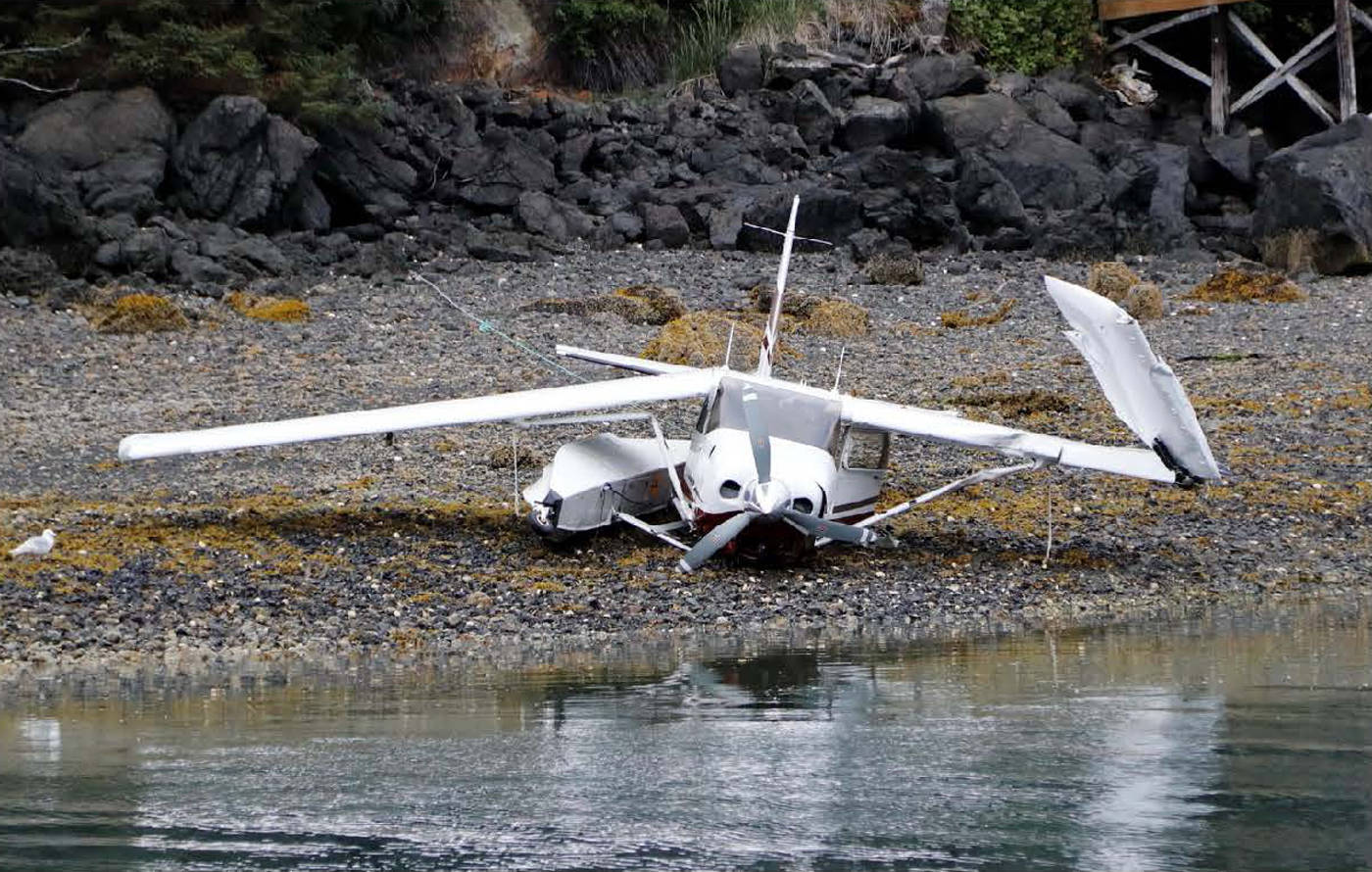The National Transportation Safety Board has released new details on a July 2016 plane crash in Halibut Cove, citing a condition called glassy water.
Alaska Dispatch News owner Alice Rogoff, the pilot and sole occupant of her float-equipped Cessna 206, crashed into Halibut Cove’s tidal waters on July 3, 2016, during an attempted landing, according to a factual report released earlier this month. The plane left the Homer Airport for the community of Halibut Cove on Ismailof Island around 5:45 p.m. that evening and crashed 11 minutes later, the report states. Rogoff was on her way to attend long-time Halibut Cove resident and former Alaska legislator Clem Tillion’s 91st birthday party.
In Rogoff’s statement to the NTSB, she wrote that she’s “very familiar with this 10-minute flight, having landed on water at Halibut Cove many times.”
Rogoff wrote that she touched down faster than anticipated, which caused the airplane to bounce.
“As I came over the rocky bar and set up to land, the aircraft hit the water with more speed and sooner than expected, causing it to bounce off the water,” she wrote. “Because of the short landing space, and my speed, I determined that it was better to abort, rather than salvage, my landing attempt.”
The report notes that photos of the crash sent to the NTSB show Rogoff’s plane “above glassy water conditions.”
According to the report, a witness described seeing the plane touch down on the water briefly before beginning to climb again. When it was about 40 feet above the water, it started a “steep left turn” and climbed until it struck some tall trees.
“I recall being in a nose-high attitude and being unable to see in front of the aircraft,” Rogoff wrote in her statement. “While climbing out and turning with obstacles in front of me, I believe I hit a tree with my left float.”
Following the impact with the tree, the plane landed in the water near the dock to the Saltry, a popular Halibut Cove restaurant. The Danny J, a tour boat associated with the Saltry, was motoring toward the dock when Rogoff’s plane crashed.
Rogoff said she kicked the pilot window and got herself out of the plane. Several nearby good Samaritans quickly came to her aid and she suffered no injuries. It was later removed from the beach by a helicopter.
Neither Alaska Wildlife Troopers nor members of the NTSB contacted Rogoff on scene.
Tom Young, a local flight instructor, said the glassy water effect is one of the most dangerous conditions to land a plane on water in.
“Essentially what happens is you lose your depth perception, and the water kind of turns into a mirror and there’s really no reference points so it’s real hard to judge your height above the water,” he said.
Several things can happen in the absence of that depth perception, Young said. Pilots can have a descent rate that’s too high and wind up hitting the water too fast, which causes the toes of the floats to catch, he said. This can cause a plane to flip over. Another potential outcome is that a pilot loses control directionally, Young said, which can lead to one of the floats digging into the water more than the other, pulling the wing tip on one side down and causing a plane to cartwheel.
Other times, the lack of depth perception can cause pilots to think they are good to land while they are still too high above the water. If the pilot is slowing down while still too far above the water, the plane could stall and subsequently hit the water very hard, Young said. That impact can break the floats or the supporting structure, he said.
“Since you don’t have any depth perception, especially if you’re away from the shore where you can’t have any reference points, you end up getting vertigo,” Young said.
This requires pilots to trust their planes and instruments to tell them where they are in relation to the water, he said.
“It takes practice and forethought,” he said of landing on glassy water.
Young said that while teaching pilots, he encourages them to use a larger area for landing to compensate for glassy water. He also tells them to set up a slow descent rate and hold a proper attitude in terms of the plane’s nose not being too high or too low.
Young said that when it comes to glassy water landings, he tells pilots, “don’t land farther from the shore than you can swim.”


